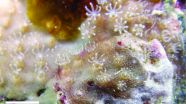New guidelines recommend brain stents to fight strokes in certain patients
2015-07-02
(Press-News.org) MAYWOOD, Ill. - New devices called stent retrievers are enabling physicians to benefit selected patients who suffer strokes caused by blood clots. The devices effectively stop strokes in their tracks.
For the first time, new guidelines from the American Heart Association/American Stroke Association recommend the treatment for carefully selected patients who are undergoing acute ischemic strokes and who meet certain other conditions.
Loyola University Medical Center stroke specialist Jose Biller, MD, is a member of the expert panel that wrote the guidelines, published in the journal Stroke. Dr. Biller is chair of the Department of Neurology of Loyola University Chicago Stritch School of Medicine. Lead author is William Powers, MD, neurology chair at the University of North Carolina at Chapel Hill.
About 85 percent of strokes are ischemic, meaning they are caused by clots that block blood flow to the brain. Treatment with the intravenous clot-busting drug tissue plasminogen activator (tPA) can restore blood flow before major brain damage has occurred, provided the drug is given within 4.5 hours of the onset of the stroke. But in many patients, intravenous tPA alone is not sufficient to restore blood flow. In such cases, mechanical devices deployed with catheters can be used to remove the clot from a cerebral artery.
The latest mechanical device is a stent retriever. The device is a self-expanding mesh tube attached to a wire, which is guided through a catheter. The physician inserts the catheter in an artery in the groin and guides it through various blood vessels up to the blood clot in the brain. The stent retriever pushes the gelatinous blood clot against the wall of the blood vessel, immediately restoring blood flow. The stent retriever then is used to grab the clot, which is pulled out when the physician removes the catheter. This technique is known as an endovascular treatment.
Dr. Biller said intravenous tPA remains the first-line therapy for treating appropriate patients with acute ischemic strokes. "In carefully selected patients, endovascular treatment with a stent retriever can provide additional benefit," Dr. Biller said.
After reviewing results of six recent randomized clinical trials, the AHA/ASA expert panel recommended endovascular treatment for patients who are at least 18 years old; have suffered an acute, severe ischemic stroke; have a clot blocking a large artery supplying blood flow to the anterior circulation of the brain; and meet other criteria.
The guidelines say endovascular treatment is quite effective if begun within six hours of the onset of an acute ischemic stroke.
"Time is brain," Dr. Biller said. "In the right patient, treatment with intravenous tPA and a stent retriever potentially can reduce stroke damage significantly. Every effort should be made to treat these patients as early as possible by a multidisciplinary and integrated team of experts."
INFORMATION:
Stroke symptoms vary. Among other symptoms, they include:
Loss or blurring of vision in one eye.
Weakness or numbness of the face, arm or leg.
Loss or slurring of speech.
Sudden, unusual or severe headache.
If any of these symptoms are present, call 911 immediately, Dr. Biller said.
F.A.S.T. is an easy way to remember the sudden signs of stroke:
F Face drooping.
A Arm weakness.
S Speech difficulty.
T Time to call 911.
ELSE PRESS RELEASES FROM THIS DATE:
2015-07-02
Infrared date from NASA's Aqua satellite spotted the strongest storms within newborn Tropical Depression 10W over the Philippine Sea today, July 2. It is expected to strength to a tropical storm, at which time it will be renamed "Linfa."
A tropical cyclone is made up of hundreds of thunderstorms, and the highest storms are the coldest and most powerful. To identify those areas with the strongest storms, infrared data is used because it tells temperature. The higher the cloud top, the stronger the uplift in a storm and the colder the cloud top temperature will be.
The ...
2015-07-02
By growing two types of stem cells in a "3-D culture" and measuring their ability to produce retinal cells, a team lead by St. Jude Children's Research Hospital researchers has found one cell type to be better at producing retinal cells.
The research not only reveals which stem cell type might be better for treating retinal degeneration, but it also demonstrates a standardized method for quantifying the effectiveness of different stem cells for such therapies.
The research was led by Michael Dyer, Ph.D., a member of the St. Jude Department of Developmental Neurobiology ...
2015-07-02
Astronauts on the International Space Station (ISS) have a number of exercise options, including a mechanical bicycle bolted to the floor, a weightlifting machine strapped to the wall, and a strap-down treadmill. They spend a significant portion of each day working out to ward off the long-term effects of weightlessness, but many still suffer bone loss, muscle atrophy, and issues with balance and their cardiovascular systems.
To counteract such debilitating effects, research groups around the world are investigating artificial gravity -- the notion that astronauts, ...
2015-07-02
The latest Supplement to the American Ornithologists' Union Check-list of North American Birds was published this week in The Auk: Ornithological Advances, and includes several major updates to the organization of the continent's bird species. More than just a list, the Check-list groups birds into genera, families, and orders based on their evolutionary relationships, and some of the most significant changes in this year's Supplement involve the tanagers, family Thraupidae. "Recent genetic studies have overturned much of what we thought we knew about what constitutes a ...
2015-07-02
July 2, 2015 - While heart disease is the number one cause of death in both sexes, it poses special considerations in women--with risks often beginning in childhood and changing at different stages of life. Insights on cardiovascular disease (CVD) risk in women and girls throughout the life span are shared in a special symposium feature in the June issue of The American Journal of Medical Sciences (AJMS). The official journal of the Southern Society for Clinical Investigation (SSCI), AJMS is published by Wolters Kluwer.
Two symposium papers seek to increase understanding ...
2015-07-02
ATLANTA - July 2, 2015-Cancer survivors who smoke report fewer negative opinions about smoking, have more barriers to quitting, and are around other smokers more often than survivors who had quit before or after their diagnosis, according to a new study appearing in Psycho-Oncology. The authors say these factors point to potential targets to help cancer survivors quit.
Quitting smoking is important for cancer prognosis, but some cancer survivors continue to smoke. Although initial quit rates are high among those diagnosed with cancers strongly linked with smoking (e.g., ...
2015-07-02
A group of scientists led by Dr Kara Hoover of the University of Alaska Fairbanks and including Professor Matthew Cobb of The University of Manchester, has studied how our sense of smell has evolved, and has even reconstructed how a long-extinct human relative would have been able to smell.
The sense of smell plays a decisive role in human societies, as it is linked to our taste for food, as well as our identification of pleasant and unpleasant substances.
We have about 4 million smell cells in our noses, divided into about 400 different types. There is tremendous ...
2015-07-02
CORVALLIS, Ore. - Engineers at Oregon State University have invented a way to fabricate silver, a highly conductive metal, for printed electronics that are produced at room temperature.
There may be broad applications in microelectronics, sensors, energy devices, low emissivity coatings and even transparent displays.
A patent has been applied for on the technology, which is now available for further commercial development. The findings were reported in Journal of Materials Chemistry C.
Silver has long been considered for the advantages it offers in electronic devices. ...
2015-07-02
Research conducted in Okinawa, Japan, by graduate student Yu Miyazaki and associate professor James Davis Reimer from the University of the Ryukyus has found a very unusual new species of octocoral from a shallow coral reef in Okinawa, Japan. The new species can be considered a "living fossil", and is related in many ways to the unusual blue coral. The study was published in the open access journal ZooKeys.
Unlike scleractinians, most octocorals lack a hard skeleton, and therefore many have the common name "soft coral". One exception is the endangered genus Heliopora, ...
2015-07-02
COLUMBIA, Mo. - For years, news organizations that post content on the Internet have allowed readers to leave comments about stories. Often, these readers' comments become a forum for political debates and other communication that the news organizations do not consider important to their journalistic practices. Now, researchers from the University of Missouri School of Journalism have found that editors and owners of news organizations may want to pay more attention to what their readers are saying about their news stories in order to better serve their consumers. Timothy ...
LAST 30 PRESS RELEASES:
[Press-News.org] New guidelines recommend brain stents to fight strokes in certain patients

